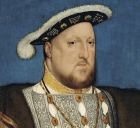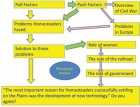Independent Learning
The range of demands inherent in historical thinking and the different assessment objectives that students are required to meet mean that teachers often come to rely on tightly mapped programmes of content coverage and basic templates to help students identify and respond to particular kinds of questions. It is important for teachers to evaluate the effects of these strategies, identifying what they can and cannot achieve, where they may be appropriate and where they may tend to inhibit young people’s learning. Curriculum planning requires careful consideration not just of the kinds of scaffolding that can structure and support students’ next steps, but also of when and how those support structures will be removed. Historical thinking involves the capacity to ask important questions about the past, which calls for curiosity and commitment as well as confidence in determining what kind of information and sources of evidence can be used to answer them. The resources in this section illustrate how different teachers have sought to get the balance right; providing adequate structure while promoting their students’ ultimate independence as historical thinkers.
-

The mechanics of history: interpretations and claim construction processes
ArticleClick to view -

How history learners can ‘dig school’ under lockdown
ArticleClick to view -

Making reading routine
ArticleClick to view -

Allowing A-level students to choose their own coursework focus
ArticleClick to view -

‘This extract is no good, Miss!’
ArticleClick to view -

From road map to thought map: helping students theorise the nature of change
ArticleClick to view -

Bringing together students from Bradford and Peshawar
ArticleClick to view -

Developing independent learning with Year 7
ArticleClick to view -

The knowledge illusion
ArticleClick to view -

An attempt to make Year 9 Masters of Learning
ArticleClick to view -

Independent learning in a nutshell
ArticleClick to view -

The 'structured enquiry' is not a contradiction in terms: focused teaching for independent learning
ArticleClick to view

